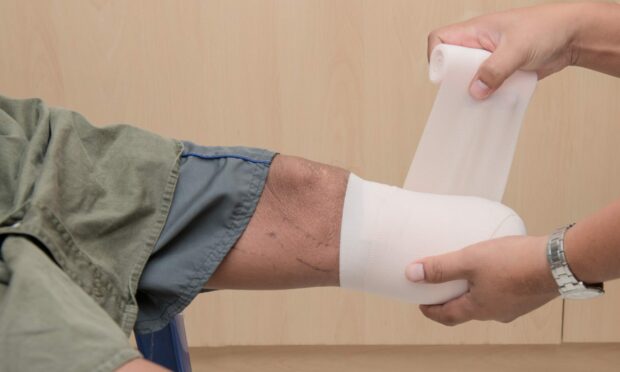Nearly half of all amputations in the Highland and Grampian areas are linked to diabetes, new stats seen by the P&J show.
People with the condition are at a higher risk of developing nerve damage in their extremities due to high blood sugar levels.
This can prevent them from feeling pain, potentially being unaware if they’ve developed circulation issues or wounds.
They usually appear on the feet but can also be found on legs, hands or folds of skin near the stomach.
Sores like these take longer to heal and, over time, can become much worse.
If the infection can’t be stopped then some toes, a foot, or the entire lower leg may need amputated.
How many diabetes-related amputations have there been?
Over the last five years, more than 1,700 amputations were carried out in the NHS Highland and Grampian areas.
More than two-fifths of these (44%) were linked to diabetes, according to data obtained by the P&J via a freedom of information request.
In some years, the split was 50-50, with the majority of amputations related to diabetes rather than other injuries.
Stats from NHS Highland showed more toes were lost to diabetes than all other reasons combined over the last five years.
And nearly half of all lower leg amputations were caused by complications from the disease.
Can amputations be prevented?
Professor Sandra MacRury, consultant diabetologist at NHS Highland, says there are many ways that people with diabetes can protect themselves.
This includes looking after your feet by getting them checked regularly.
She also says smokers should look to quit, as it can harden and narrow arteries, reducing blood flow to the legs and feet.
Prof MacRury advises people with diabetes to take care of their diet – avoiding sweetened or flavoured foods, artificial trans fats, processed grains and items low in fibre.
Unfortunately, she says the risk of amputation for people with diabetes is “always higher” than the rest of the general population.
And the longer you’ve had the condition, “the more likely you are to have complications.”
Read more:
Diabetes complication leaves Inverness woman blind in one eye
100 Years of Insulin: Scientists hope to find a cure for diabetes


Conversation